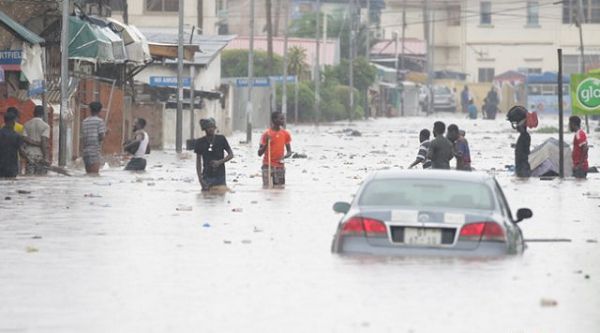
We need clear policy on disaster management
Ghana is one of the top-ranking African countries in terms of exposure to risks emanating from seismic and multiple weather-related hazards.
Situated in one of the world’s most complex climatic regions, the country is affected by the climatic forces of the Sahel and two oceans.
Advertisement
Various models and projections for climate change have highlighted its vulnerability to intense weather conditions as a result of global warming and climate change.
Historically, Ghana is exposed to natural hazards such as earthquakes, floods, coastal erosion, droughts, tropical storms and wild fires.
In more recent times, its susceptibility to floods, droughts, disease epidemics and wild fires has increased. The frequency and complexity of some of these disasters are also increasing, especially flooding.
Effective management of disaster risks has proved to be the best practice in the achievement of sustainable development.
It is indicated that every dollar spent on risk management can typically save four to nine dollars otherwise spent in an emergency response when disaster occurs.
It is in this regard that Ghana is making an intentional effort to focus more resources on disaster risk reduction, instead of reacting to disaster occurrences through relief assistance.
In the past few years, however, the degree of threats has dramatically shifted to human activities, leading to environmental degradation, infectious diseases and other public health hazards and conflicts, with consequences on public health and climate change.
The recent tidal waves that wreaked havoc on shorelines in Keta and other coastal communities in the Volta Region are a classic example of the importance of disaster management.
Across the country, but largely in cities and towns, the threats of disaster are created through poor sanitation and building plans, mining and forestry practices, poor regulation and enforcement, lack of education and poor health and safety practices.
Disasters present a significant obstacle to socio-economic stability and development.
They are nature’s methods of changing terrains and developing new biodiversities.
Response to disaster and emergencies such as floods, bushfires, drought, deforestation, collapsed buildings, infectious disease outbreaks, unsafe food and water contamination and road accidents have been ad hoc, haphazardly planned and poorly supported.
This is due to the lack of collaboration and partnership among the institutions responsible for managing risks and disasters.
The efforts of the Environmental Protection Agency (EPA), the National Disaster Management Organisation (NADMO) and other agencies are all independent of one another and isolated from the community.
Again, providing relief for disaster victims is currently being politicised by governments and political parties for campaign and voting purposes, leading to political interference and manipulations.
These have led to organisations operating and pursuing individual policies, at the detriment of maximising the scarce resources and human capacity available to support risk management.
For us, disaster management in the country should significantly shift from a response approach to a prevention and risk-reduction approach.
Essentially, effective disaster management that results in impact reduction involves employing robust disaster management techniques.
It is necessary for state authorities to incorporate risk reduction techniques in development plans and have the political will to meet these needs.
Projects planned in disaster-prone areas should mandatorily take into consideration their disaster risks, as well as other environmental impacts.
As the disruptive effects of disaster continue to increase, it is important for disaster management organisations to demonstrate proactiveness towards effective emergency management.
State administrators managing impact, especially NADMO, should be able to coordinate and regulate activities of the various non-governmental and private organisations.
The Daily Graphic is, therefore, calling for a multi-sectoral approach to emergency and disaster management in the country by all sectors and partners involved to ensure adequate prediction, regulation, prevention and lessons for mitigation and monitoring, information and education to the public.
We want to see a clear national policy direction and systems approach to disaster, risk and emergency management that allow for effective partnership, encourage capacity strengthening and resource collaboration among all partners for effective measures towards prevention, mitigation, preparedness, response and recovery.



